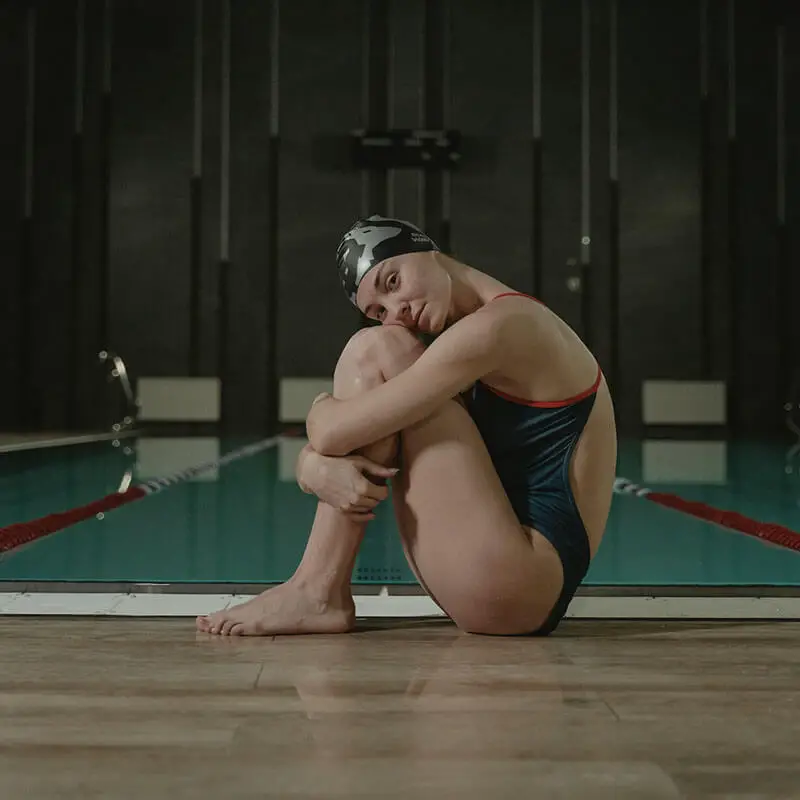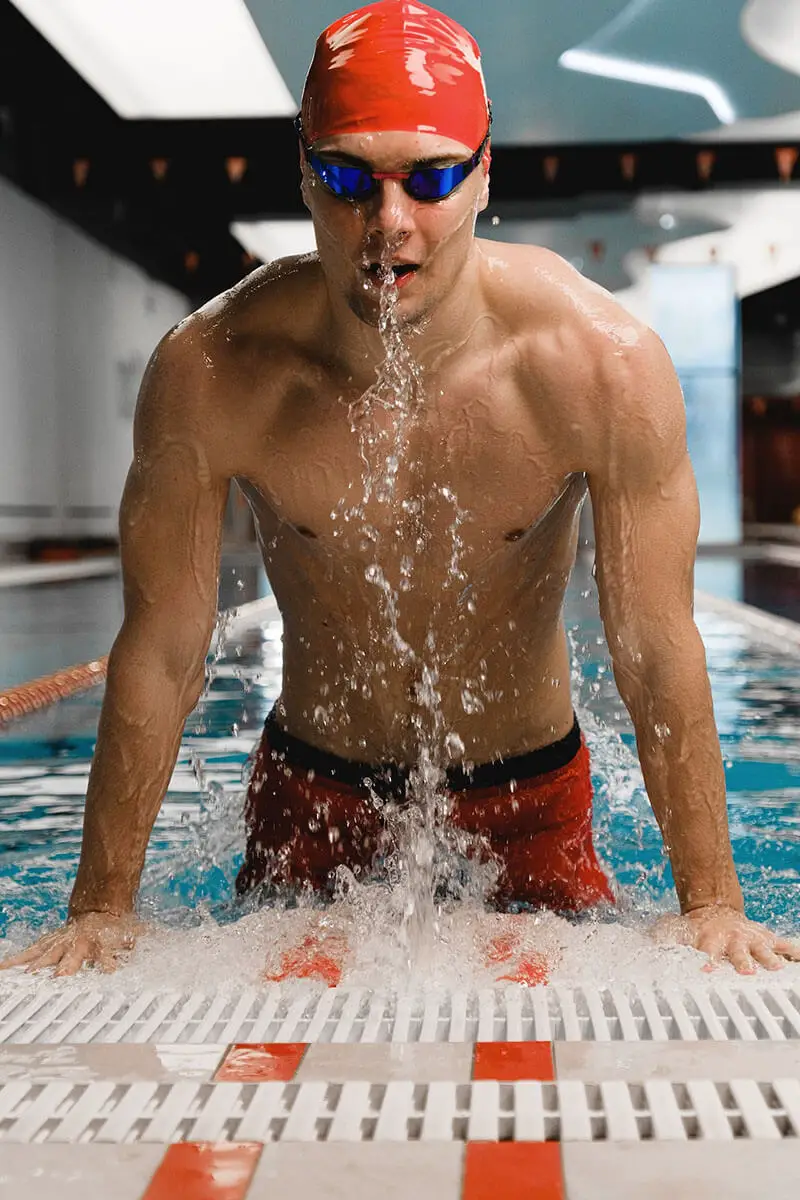It’s not uncommon to see competitive swimmers with hairless bodies. The practice of shaving for speed and agility has long been an essential part of the sport. But have you ever wondered, “do swimmers shave their private areas?”

Yes, some swimmers do shave their private areas, but it’s a personal choice rather than a requirement. The main reasons include perceived reduction of water drag, increased comfort in tight swimwear, and a heightened sense of cleanliness and confidence. However, the direct impact of shaving this area on swimming speed is considered minimal.
Keep reading on, where we delve deep into the reasons behind why swimmers shave their body hair, and explore the rationale behind shaving their private areas or not.
Understanding the Culture of Shaving in Swimming
General Hair Removal Practices in Competitive Swimming
The culture of hair removal in swimming dates back to the early 1950s. It began with swimmers noticing a difference in their feel for the water, the smoothness of their stroke, and an increased perception of speed when their body was devoid of hair.
This practice soon became widespread due to its psychological and physiological benefits.
Male Swimmers and Shaving
There’s a bit of myth and mystery surrounding male swimmers and shaving. Some believe that every hair must be removed, including those in private areas, while others think it’s only about the visible parts of the body.
To clear the confusion, it’s important to note that shaving is a personal choice often made based on comfort, preference, and belief in its performance-enhancing effects.
Let’s take the greatest swimmer and Olympian of all time, Michael Phelps, as an example – he’s been known to shave his entire body before significant races. This fact alone has caused many swimmers to follow after his lead.
To be clear, I don’t think Michael Phelps was as successful as he was because he shaved his hair (private areas included), but it certainly didn’t hurt him. If you think it could help you, then go for it.
Female Swimmers and Shaving
On the other side of the pool, female swimmers often face societal taboos when it comes to having body hair. Whether they are swimmers or not, many women shave or wax their body hair regardless.
Yet, in the world of competitive swimming, hair removal in private areas is usually discussed as a matter of personal preference.
For instance, Natalie Coughlin, a twelve-time Olympic medalist, publicly shared that she finds the practice of full-body shaving helpful.
Why Do So Many Swimmers Shave Their Body Hair?

Reasons Swimmers May Shave Their Private Areas
Shaving private areas, for both male and female swimmers, may be driven by a couple of factors.
- The key potential benefit is hydrodynamics – reducing drag and increasing the smoothness of the swimmer’s movement through water.
- Swimmers also claim to feel more comfortable and ‘light’ in the water without body hair.
Is It Mandatory or Just a Personal Preference?
Despite the common practice, no official rules or regulations mandate swimmers to shave their private areas.
A recent anonymous survey of professional swimmers found that the decision to shave (or not to shave) remains a deeply personal choice, influenced by individual comfort levels and beliefs about its impact on performance.
Does shaving pubic hair really improve swimmers’ performance even when covered up by a swimsuit?
The question of whether pubic hair, covered by a swimsuit, contributes to drag in water is nuanced.
From a purely physics perspective, any hair on the body, including those in covered areas, could theoretically create additional microturbulence, potentially increasing drag to some extent.
However, the effect of hair in the pubic area on drag would likely be extremely minimal given its location and the fact it’s covered by swimwear.
Moreover, swimwear designed for competitive swimming is generally form-fitting and designed to minimize drag, which further reduces any potential impact of pubic hair on swimmer’s performance.
Therefore, the consensus within the swimming community and among sports scientists is that the decision to shave one’s private area is unlikely to have a significant direct impact on swimming speed.
That said, some swimmers choose to shave their private areas for reasons other than direct performance enhancement. Some may find it more comfortable, especially when wearing tight-fitting swimwear.
Others may feel more confident when they’ve shaved fully, which can indirectly improve their performance. Again, the decision to shave the private area is largely a personal one.
The Pros and Cons of Swimmers Shaving Private Areas

Pros
Physically, shaving body hair can reduce water drag, providing a more efficient, streamlined path through the water.
Moreover, it can also lead to a psychological boost. Many swimmers report feeling faster and more confident after a full-body shave, which can positively impact performance.
Cons
On the flip side, shaving can lead to skin irritation, increased risk of ingrown hairs, and potential risk of infection if not done correctly.
Furthermore, pressure to conform to body hair norms can lead to body shaming and unnecessary stress for young swimmers.
Alternatives to Shaving
Waxing, Depilatory Creams, and More
For swimmers seeking alternatives to shaving, waxing and depilatory creams offer viable options. These methods can provide a longer-lasting smoothness, but they also come with their own risks such as allergic reactions and, in the case of waxing, pain.
Laser Hair Removal
Some athletes have turned to laser hair removal as a long-term solution. Laser treatment can significantly reduce body hair over time. However, it’s costly, requires multiple sessions, and doesn’t guarantee complete hair removal.
Frequently Asked Questions
How does shaving affect a swimmer’s performance in the water?
Shaving can positively influence a swimmer’s performance by reducing drag – the resistance a swimmer feels from the water as they move through it. When swimmers shave, they remove the body hair that can create minor turbulence in the water, slowing them down. Thus, a hairless body can streamline the swimmer’s path through the water, potentially leading to faster swim times.
Does shaving have more of a psychological or physical impact on swimmers?
While the physical benefits of shaving, such as reduced water drag, are evident, the psychological impact shouldn’t be underestimated. Many swimmers claim that shaving helps them feel sleeker, faster, and more confident in the water. This psychological boost can be as powerful, if not more so, than the physical advantages, especially in a high-pressure competition setting where mindset plays a crucial role.
Is there a stigma associated with not shaving in the swimming community?
In general, there’s no prevalent stigma in the swimming community against those who choose not to shave. The practice is largely personal and often depends on the swimmer’s comfort, personal beliefs about its impact on performance, and cultural norms. However, in highly competitive circles, there might be peer pressure to conform to the tradition of shaving before big meets.
How often do swimmers need to shave to maintain smoothness?
The frequency of shaving depends on the individual’s hair growth rate, which varies from person to person. Some swimmers may find it necessary to shave every few days, while others may only need to shave once a week or before major competitions. The timing is typically aligned with their training and competition schedules to ensure optimal smoothness and comfort during important events.
Is there a difference in shaving practices across different countries or cultures in the swimming world?
The practice of shaving in swimming can vary depending on cultural norms and perceptions around body hair. In some cultures, body hair is widely accepted, and hence, swimmers from these backgrounds might not engage in regular shaving. Conversely, in countries where swimming is highly competitive, the tradition of shaving for big competitions is more common. Overall, the decision to shave is individual and personal, although cultural norms can influence this choice.
Sources:
